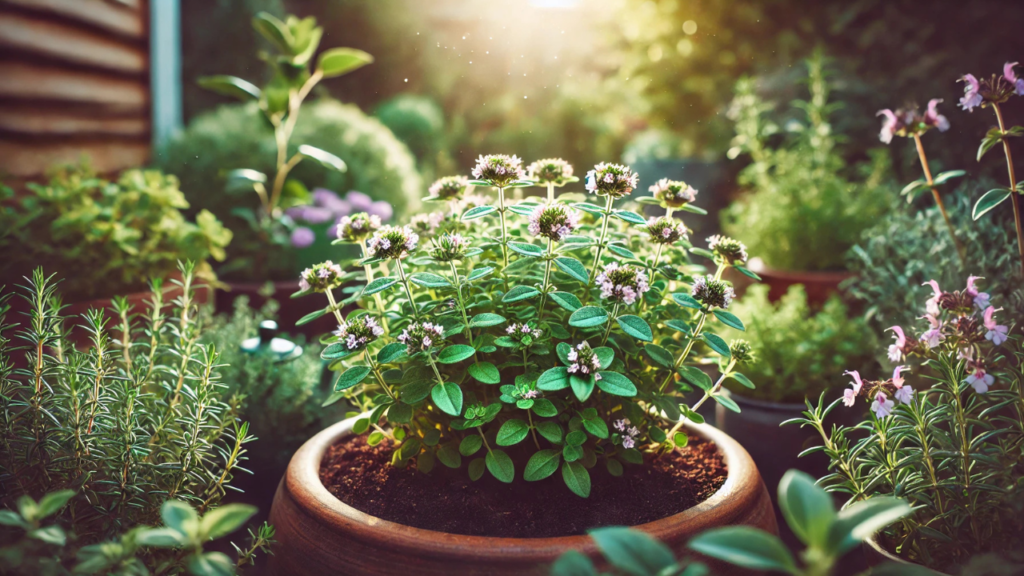Thyme, a fragrant herb commonly used in culinary dishes, comes in many varieties. One of the lesser-known but highly valued types is Thyme Easton. In this guide, we will explore the unique characteristics of Thyme Easton, its benefits, its various uses, and how to grow this herb in your garden or home. Whether you’re a culinary enthusiast or interested in the health benefits of this herb, Thyme Easton is a must-have addition to your herb collection.
What is Thyme Easton?
Thyme Easton is a specific variety of thyme (Thymus vulgaris) originating from Easton. Known for its distinctive aroma and flavour, this herb is favoured in kitchens worldwide for its versatility. It is often used in various cuisines, from Mediterranean to French, and is a staple in spice blends such as Herbes de Provence.
Like other varieties of thyme, Thyme Easton has small, evergreen leaves that are green in colour and emit a strong fragrance when crushed. It belongs to the mint family, Lamiaceae, and boasts the same robust flavour profile as other thyme varieties—earthy, slightly peppery, and rich in essential oils.
Health Benefits of Thyme Easton

Thyme Easton isn’t just prized for its culinary uses—this herb has a long history of medicinal benefits. It is packed with antioxidants, vitamins, and minerals, contributing to its health-promoting properties. Here are some of the key health benefits of incorporating Thyme Easton into your diet or daily routine:
Rich in Antioxidants: Thyme Easton is high in flavonoids and phenolic compounds, which are potent antioxidants. These antioxidants help fight free radicals in the body, reducing oxidative stress and potentially lowering the risk of chronic diseases such as heart disease and cancer.
Supports Immune Health: Thyme Easton contains compounds like thymol, which have been shown to help boost the immune system. This herb is a natural remedy for colds, coughs, and respiratory issues. Drinking thyme tea or adding it to soups can help soothe a sore throat and promote overall wellness.
Anti-inflammatory Properties: The antioxidants and volatile oils found in Thyme Easton have anti-inflammatory effects. This can be beneficial for individuals suffering from conditions like arthritis, muscle pain, or general inflammation.
Rich in Vitamins: Thyme Easton is an excellent source of vitamin C, A, and several B vitamins. These vitamins support various body functions, including skin health, vision, energy production, and immune support.
Digestive Health: Thyme has long been used to remedy digestive issues, including bloating, indigestion, and gas. Thyme Easton’s compounds promote better digestion and help soothe an upset stomach.
Culinary Uses of Thyme Easton
Thyme Easton is a fantastic herb to incorporate into many dishes. Whether you use it fresh or dried, its distinct flavour enhances the taste of both savoury and sweet recipes. Below are a few ideas for using Thyme Easton in your cooking:
Soups and Stews: Thyme is a classic herb for soups, stews, and broths. Thyme Easton’s bold flavour can be added to vegetable, chicken, or beef soups for a richer, more aromatic taste.
Roasted Meats: Thyme pairs wonderfully with roasted meats such as lamb, chicken, and beef. It complements the flavours of these meats, especially when combined with garlic, rosemary, and lemon.
Vegetable Dishes: Roasted or sautéed vegetables like potatoes, carrots, and squash benefit from adding Thyme Easton, which adds a pleasant earthy note.
Herb Blends: Thyme Easton is often used in herb blends, such as Herbes de Provence or Italian seasoning. Mix it with other herbs like oregano, rosemary, and basil to create your signature spice blend.
Tea: Thyme tea is a popular way to enjoy the medicinal benefits of this herb. Simply steep fresh or dried Thyme Easton leaves in hot water for a few minutes. Add honey or lemon for extra flavour.
How to Grow Thyme Easton
Growing Thyme Easton can be a rewarding experience if you’re a gardening enthusiast. This hardy herb is easy to grow and requires minimal care. Here are the steps to successfully grow Thyme Easton in your garden or indoors:
Planting Location: Thyme Easton thrives in a sunny location with well-drained soil. Ensure the soil is slightly alkaline, and avoid areas with heavy, waterlogged soil.
Sowing Seeds or Transplants: You can start Thyme Easton from seeds or purchase young plants from a nursery. Plant seeds indoors a few weeks before the last frost date if growing from seeds. Transplant seedlings outdoors after the danger of frost has passed.
Watering: Thyme is drought-tolerant and prefers dry conditions, so avoid overwatering. Water the plant thoroughly, but allow the soil to dry between waterings. Overwatering can lead to root rot.
Pruning: Regular pruning will help Thyme Easton grow more vigorously. Trim back the stems, especially after the plant flowers, to encourage new growth. You can also harvest the leaves at this time.
Harvesting: Thyme Easton can be harvested once established, typically around 6 to 8 weeks after planting. Use a sharp pair of scissors or pruning shears to snip off the leaves. Harvest in the morning for the best flavour.
Winter Care: Thyme Easton is a hardy herb that can withstand cold weather. However, if you’re growing it indoors or in a pot, bring it inside during winter to protect it from frost.
How to Preserve Thyme Easton
To preserve the freshness of Thyme Easton, you can either dry or freeze the herb. Drying thyme is a standard method for long-term storage. To do this, tie the sprigs together with string and hang them upside down in a dry, cool place for about 1 to 2 weeks until thoroughly dried. Once dried, crumble the leaves off the stems and store them in an airtight container.
Another option is to freeze the fresh thyme. Simply wash it, pat it dry, and place the sprigs in a freezer-safe bag or container. When ready to use it, you can pull out the frozen sprigs and use them as needed in your cooking.
5 FAQs about Thyme Easton
1. What is the difference between Thyme Easton and regular thyme?
Thyme Easton is a specific variety of thyme with a distinctive flavour profile and origin. It may have subtle differences in aroma, flavour, and growth characteristics compared to other varieties of thyme. While both share similar culinary and medicinal uses, Thyme Easton is prized for its more potent aromatic flavour.
2. Can I use Thyme Easton for medicinal purposes?
Thyme Easton has various medicinal benefits, including antimicrobial, anti-inflammatory, and digestive health properties. It has been used traditionally to treat respiratory issues, soothe sore throats, and improve digestion. Always consult with a healthcare professional before using it as a remedy.
3. Is Thyme Easton easy to grow?
Yes, Thyme Easton is relatively easy to grow. It thrives in well-drained soil, enjoys full sunlight, and is drought-tolerant. Whether you grow it in a garden or a pot, it requires minimal care and is resistant to pests.
4. How should I store Thyme Easton?
Thyme Easton can be stored by drying or freezing. To dry, hang the sprigs upside down in a cool, dry place and crumble the leaves when scorched. Freezing is another option—wash and freeze the sprigs in a sealed container or bag.
5. Can Thyme Easton be used in both cooking and medicine?
Absolutely! Thyme Easton is a versatile herb used in both culinary and medicinal applications. It adds flavour to dishes, and its health benefits make it an excellent addition to natural remedies for coughs, sore throats, and digestive issues.
In conclusion, thyme Easton is a highly versatile herb with a unique flavour and many health benefits. Whether you use it for culinary creations, medicinal purposes, or growing it in your garden, it is a valuable herb to have at your disposal. With its numerous advantages, thyme Easton can enhance your cooking while supporting your overall well-being.
